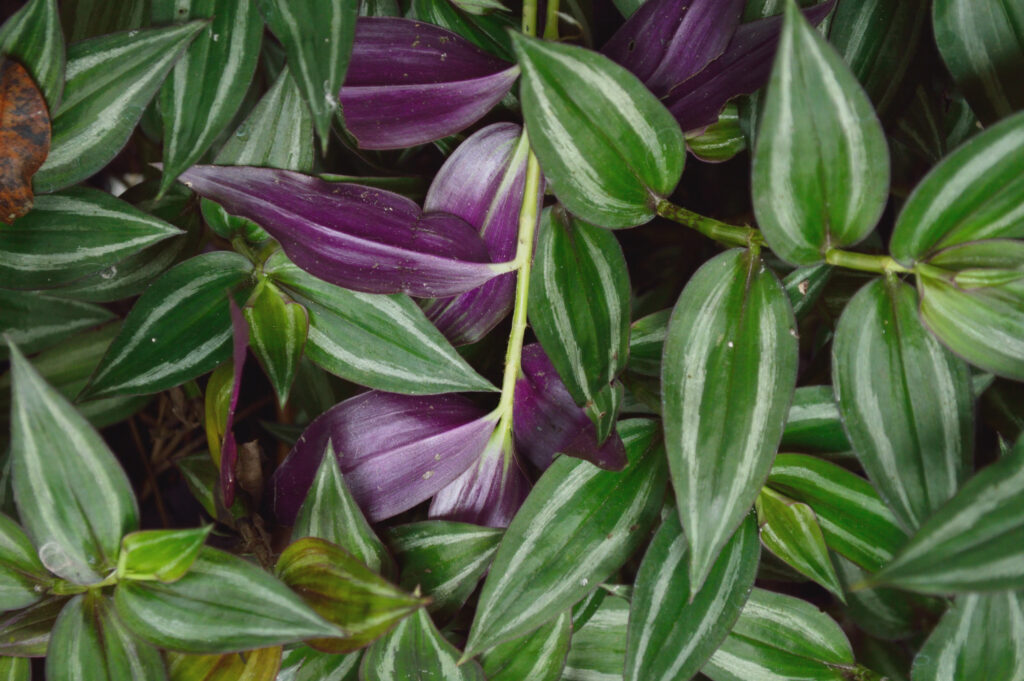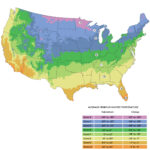Zebrina pendula is a trailing tropical plant that closely resembles Trandescantia zebrina, wandering Jew. For that similarity, Zebrina is known as purple wandering Jew.
Zebrina is a rapidly growing plant with variegated green and white striped upper leaves that and deep reddish-purple on the undersides.
Zebrina is a good choice for hanging baskets or containers that allow the branches to trail over the sides.
Zebrina pendula will be found under Trandescantia zebrina in most current botanical listings.
Get to know Zebrina
- Plant type: Tropical perennial
- Growing Zones and range: Zones 10-12
- Hardiness: Tender
- Optimal growing temperature: day 70° to 80°F (21°-27°C) and nighttime temperatures not less than 55°F (13°C).
- Height and width: Trailing branches can grow to 36 inches (91cm) long
- Foliage: Variegated green and white striped leaves on the upper surface, reddish-purple underneath.
- Flowers: Insignificant blooms
- Uses: Houseplant
- Common name: Purple wandering Jew
- Botanical name: Zebrina pendula (syn. Tradescantia zebrina)
- Family: Commelinaceae
- Origin: North, Central, and South America

Where to plant Zebrina
- Zebrina grows best in bright to moderate light from a northern or eastern exposure.
- Grow Zebrina in standard indoor potting soil.
How to water and feed Zebrina
- Keep the soil moist, but not soggy. Mist daily. Zebrina prefers 40 to 45 percent humidity.
- Fertilize Zebrina every 2 weeks during the growing season with a mild liquid fertilizer.
Zebrina care
- Repot Zebrina when the roots occupy ½ of pot space.
- Pinch off growing tips to make the plant bushy.
- Allow the plant to rest from late fall through winter; slowly reduce water, keeping the soil barely moist; feed once a month.
Growing Zebrina as a houseplant
- Zebrina needs bright light to produce it best leaf color.
- Zebrian thrives in average room temperature and medium humidity.
- The soil should be allowed to dry between waterings; overwatering can foster root rot.
- Fertilizer can be applied regularly in spring and summer.
- Dry leaves should be removed and stems should be pinched back to encourage full growth.
Zebrina pests and diseases
- Zebrina is susceptible to mealybugs, mites, scale, slugs, and whiteflies.
Zebrina propagation
- Propagate Zebrina by stem cuttings.
Zebrina varieties to grow
- Zebrina pendula, purple wandering Jew. Ovate leaves bearing lengthwise silivery bands; undersides are purple; flowers are rose colored; this is the most common form. Cultivars include: ‘Discolor’ whcih has slender silver stripes on coppery green background; ‘Purpusii’ has leaves of dark red or greenish-red; ‘Quadricolor’ grows purplish green leaves with longitudinal bands of white, pink, and carmine red.



